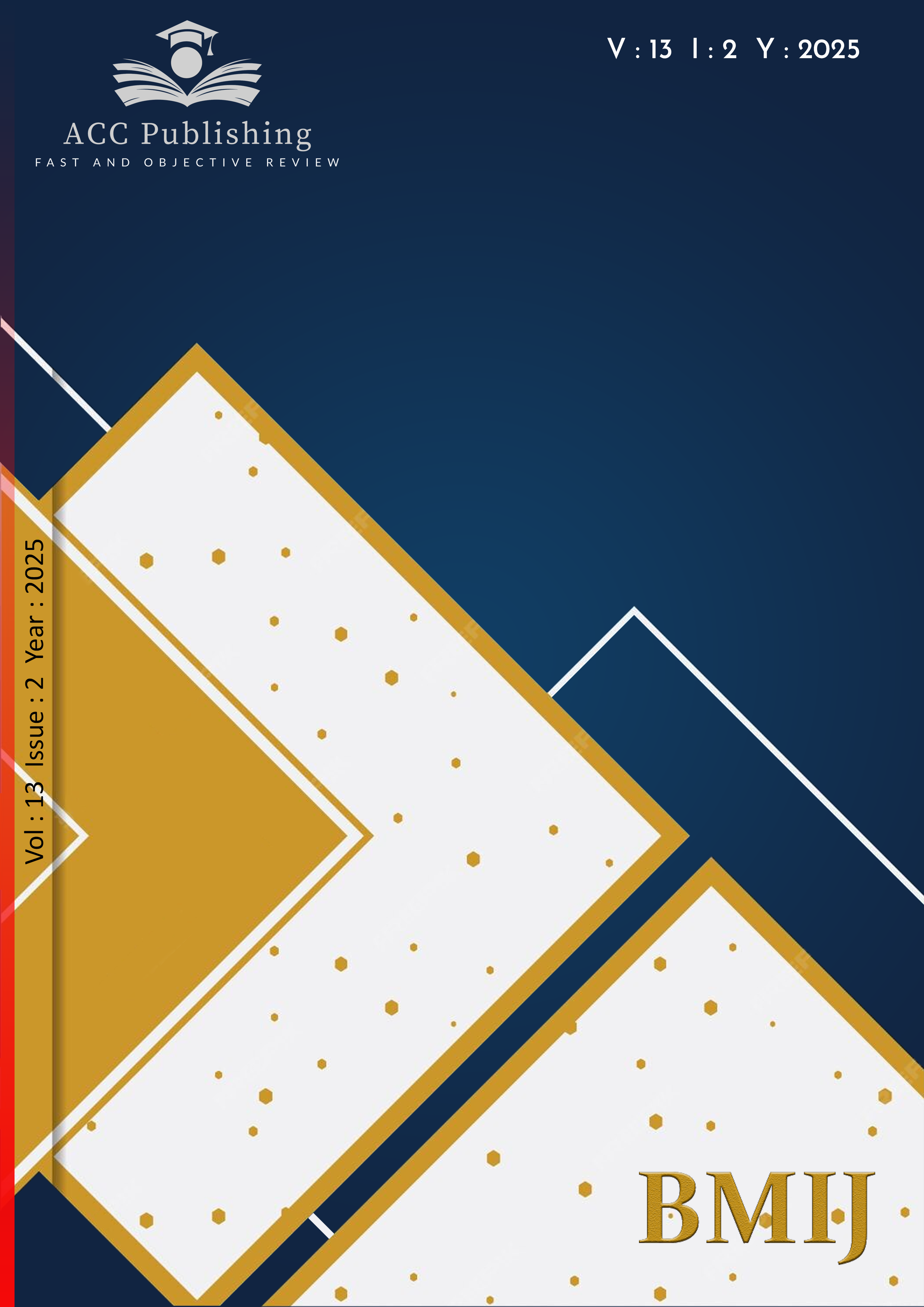Hemşirelerde sessiz istifa ve işten ayrılma niyeti arasındaki ilişki: Sistematik bir inceleme ve meta-analiz

Yayınlanmış 25.06.2025
Anahtar Kelimeler
- Quiet Quitting, Turnover Intention, Nurses, Systematic Review, Meta-Analysis
- Sessiz İstifa, İşten Ayrılma Niyeti, Hemşireler, Sistematik İnceleme, Meta Analiz
Nasıl Atıf Yapılır
Telif Hakkı (c) 2025 Eray Ekin Sezgin

Bu çalışma Creative Commons Attribution-NonCommercial-NoDerivatives 4.0 International License ile lisanslanmıştır.
Nasıl Atıf Yapılır
Öz
Son zamanlarda yapılan bazı araştırmalar, hemşireler arasında sessiz istifa ile işten ayrılma niyeti arasında olumlu bir ilişki olduğunu göstermiş olsa da bu konuda kapsamlı bir sistematik inceleme henüz yapılmamıştır. Bu alandaki eksikliklerin giderilmesi, hemşirelerin işten ayrılma niyetlerini etkileyen dinamiklerin daha net bir şekilde anlaşılmasını sağlayacak ve gelecekteki önleyici stratejilerin geliştirilmesine ışık tutacaktır. Bu meta-analitik inceleme, hemşireler arasında sessiz istifa ve işten ayrılma niyeti arasındaki ilişkiyi bütünleştirmeyi ve eleştirel bir şekilde değerlendirmeyi amaçlamıştır. Tüm çalışmalar kesitsel bir tasarıma sahip olup, 2023 yılından itibaren gerçekleştirilmiştir. Bu meta-analitik araştırma için ampirik çalışmaları toplamak üzere ScienceDirect, Medline, JSTOR, ProQuest, Scopus ve Web of Science dahil olmak üzere altı veri tabanında kapsamlı bir arama yapılmıştır. Sonuçlar, sessiz istifa ile işten ayrılma niyeti arasında orta düzeyde pozitif bir ilişki olduğunu göstermiştir (r = 0.40, p < 0.0001). Ayrıca, genel etki büyüklüğü tutarlılık göstermiş ve heterojenlik düzeyi (I² = %94,7) kabul edilebilir sınırlar içinde değerlendirilmiştir. Sessiz istifanın işten ayrılma niyetini nasıl etkilediğinin daha net bir şekilde anlaşılabilmesi için daha derinlemesine araştırmalar yapılması gerekmektedir. Hemşirelik yöneticileri, sessiz istifayı engellemek için hemşirelerin profesyonel gelişimlerini teşvik edici, işlerine olan bağlılıklarını artıran klinik rehberler ve destek programları oluşturmalıdır. Böylelikle, hemşirelerin işyerlerinde daha fazla tatmin ve motivasyon elde etmeleri sağlanabilir, dolayısıyla işten ayrılma niyetleri de azaltılabilir.
Referanslar
- Anand, A., Doll, J., & Ray, P. (2023). Drowning in Silence: A Scale Development and Validation of Quiet Quitting and Quiet Firing. International Journal of Organizational Analysis, 32(4), 721-743. https://doi.org/10.1108/ IJOA-01-2023-3600
- Bae, S. H. (2022). Noneconomic and Economic Impacts of Nurse Turnover in Hospitals: A Systematic Review. International Nursing Review, 69(3), 392-404. https://doi.org/10.1111/inr.12769
- Barrett, J. R. (2024). Quiet Quitting: A Conceptualisation, Scale Development and Validation. Master's thesis, Auburn University, Alabama.
- Buchan, J., & Catton, H. (2023). Recover to Rebuild. Investing in the Nursing Workforce for Health System Effectiveness. International Council of Nurses.
- Bayrakci, E. (2022). Hemşirelerde işten ayrılma niyeti ve performans ilişkisi: covid-19 tükenmişliğinin düzenleyici rolü. İşletme Araştırmaları Dergisi, 14(1), 835-845. https://doi.org/10.20491/isarder.2022.1413
- Chen, Y., Zhou, X., Bai, X., Liu, B., Chen, F., Chang, L., & Liu, H. (2024). A systematic review and meta-analysis of the effectiveness of social support on turnover intention in clinical nurses. Frontiers in Public Health, 12, 1393024. https://doi.org/10.3389/fpubh.2024.1393024
- Chu, X., Zhang, L., & Li, M. (2022). Nurses' strengths use and turnover intention: The roles of job crafting and self-efficacy. Journal of Advanced Nursing, 78(7), 2075-2084. https://doi.org/10.1111/jan.15124
- Cohen, J. (2013). Statistical Power Analysis for the Behavioural Sciences, 2nd ed.; Academic Press: Cambridge, MA, USA.
- Galanis, P., Katsiroumpa, A., Vraka, I., Siskou, O., Konstantakopoulou, O., Katsoulas, T., ... & Kaitelidou, D. (2024a). Nurses quietly quit their job more often than other healthcare workers: An alarming issue for healthcare services. International nursing review, 71(4), 850-859. https://doi.org/10.1111/inr.12931
- Galanis, P., Moisoglou, I., Katsiroumpa, A., Gallos, P., Kalogeropoulou, M., Meimeti, E., & Vraka, I. (2025). Workload increases nurses' quiet quitting, turnover intention, and job burnout: evidence from Greece. AIMS Public Health, 12(1), 44-55. https://doi.org/10.3934/publichealth.2025004
- Galanis, P., Moisoglou, I., Katsiroumpa, A., Vraka, I., Siskou, O., Konstantakopoulou, O., & Kaitelidou, D. (2024b). Moral resilience reduces levels of quiet quitting, job burnout, and turnover intention among nurses: evidence in the post COVID-19 era. Nursing Reports, 14(1), 254-266. https://doi.org/10.3390/nursrep14010020
- Galanis, P.; Moisoglou, I.; Malliarou, M.; Papathanasiou, I.V.; Katsiroumpa, A.; Vraka, I.; Siskou, O.; Konstantakopoulou, O.; Kaitelidou, D. (2023). Quiet Quitting among Nurses Increases Their Turnover Intention: Evidence from Greece in the Post-COVID-19 Era. Healthcare, 12(1), 79. https://doi.org/10.3390/healthcare12010079
- Galanis, P., Moisoglou, I., Papathanasiou, I. V., Malliarou, M., Katsiroumpa, A., Vraka, I., ... & Kaitelidou, D. (2024c). Association between organisational support and turnover intention in nurses: A systematic review and meta-analysis. In Healthcare 12(3), 291. https://doi.org/10.3390/healthcare12030291
- Gallup. (2023). State of the Global Workplace: 2023 Report. Erişim tarihi: 28/03/2025. https://www.scribd.com/document/654992676/Gallup-State-of-the-Global-Workplace-2023-Report.
- Geng, R., Geng, X., & Geng, S. (2025). Identifying Key Antecedents of Quiet Quitting Among Nurses: A Cross‐Profession Meta‐Analytic Review. Journal of Advanced Nursing, 0, 1-21. https://doi.org/10.1111/jan.16934
- Gün, İ., Çetinkaya Kutun, F., & Söyük, S. (2025). Mediating Effect of Turnover Intention on the Relationship Between Job Burnout and Quiet Quitting in Nurses. Journal of Advanced Nursing, 1-9. https://doi.org/10.1111/jan.16807
- Higgins, J. P., & Thompson, S. G. (2002). Quantifying heterogeneity in a meta‐analysis. Statistics in Medicine, 21(11), 1539-1558. https://doi.org/10.1002/sim.1186
- Higgins, J.P.T., Thompson, S.G., Deeks, J.J. & Altman, D.G. (2003). Measuring Inconsistency in Meta-Analyses. BMJ, 327, 557-560. https://doi.org/10.1136/bmj.327.7414.557
- International Council of Nurses. ICN report says shortage of nurses is a global health emergency (2023). https://www.icn.ch/news/icn-report-says-shortage-nurses-global-health-emergency. Erişim tarihi: 14/03/2025.
- Karrani, M. A., Bani-Melhem, S., & Mohd-Shamsudin, F. (2024). Employee quiet quitting behaviours: conceptualisation, measure development, and validation. The Service Industries Journal, 44(3-4), 218-236. https://doi.org/10.1080/02642069.2023.2286604
- Kang, J., Kim, H., & Cho O-H. (2023). Quiet quitting among healthcare professionals in hospital environments: a concept analysis and scoping review protocol. BMJ Open, 13:e077811. https://doi.org/10.1136/bmjopen-2023-077811
- Kim, K. T., & Sohn, Y. W. (2024). The Impact of Quiet Quitting on Turnover Intentions in the Era of Digital Transformation: The Mediating Roles of Job Satisfaction and Affective Commitment, and the Moderating Role of Psychological Safety. Systems, 12(11), 460. https://doi.org/10.3390/systems12110460
- Lo, W.Y., Chien, L.Y., Hwang, F.M., Huang, N. & Chiou S.T. (2018). From job stress to intention to leave among hospital nurses: a structural equation modelling approach. Journal of Advanced Nursing, 74(3), 677-88. https://doi.org/10.1111/jan.13481
- Mafula, D., Arifin, H., Chen, R., Sung, C. M., Lee, C. K., Chiang, K. J., ... & Chou, K. R. (2025). Prevalence and Moderating Factors of Turnover Rate and Turnover Intention Among Nurses Worldwide: A Meta-Analysis. Journal of Nursing Regulation, 15(4), 20-36. https://doi.org/10.1016/S2155-8256(25)00031-6
- McGuinness, L. A., & Higgins, J. P. (2020). Risk‐of‐bias VISualization (robvis): an R package and Shiny web app for visualising risk‐of‐bias assessments. Research Synthesis Methods, 12(1), 55-61. https://doi.org/10.1002/jrsm.1411
- Mobley, W.H. (1982). Employee Turnover: Causes, Consequences, and Control, MA, Addison-Wesley.
- Moher, D., Liberati, A., Tetzlaff, J., Altman, D. G., & PRISMA Group (2009). Preferred reporting items for systematic reviews and meta-analyses: The PRISMA statement. Annals of Internal Medicine, 151(4), 264-269. https://doi.org/10.1016/j.ijsu.2010.02.007
- Moisoglou, I., Katsiroumpa, A., Katsapi, A., Konstantakopoulou, O., & Galanis, P. (2025). Poor Nurses' Work Environment Increases Quiet Quitting and Reduces Work Engagement: A Cross-Sectional Study in Greece. Nursing Reports, 15(1), 19. https://doi.org/10.3390/nursrep15010019
- Nadiri, H., & Tanova, C. (2010). An investigation of the role of justice in turnover intentions, job satisfaction, and organisational citizenship behaviour in hospitality industry. International Journal of Hospitality Management, 29(1), 33-41. https://doi.org/10.1016/j.ijhm.2009.05.001
- Nam, S., Wong, J. Y. H., & Fong, D. Y. T. (2025). Factors Associated With Turnover Intention Among Nurses: A Quantile Regression Analysis. Journal of Clinical Nursing, 1-12. https://doi.org/10.1111/jocn.17698
- Ren, H., Xue, Y., Li, P., Yin, X., Xin, W., & Li, H. (2024a). Prevalence of turnover intention among emergency nurses worldwide: a meta-analysis. BMC Nursing, 23(1), 645. https://doi.org/10.1186/s12912-024-02284-2
- Ren, H., Li, P., Xue, Y., Xin, W., Yin, X., & Li, H. (2024b). Global prevalence of nurse turnover rates: A meta‐analysis of 21 studies from 14 countries. Journal of Nursing Management, 1, 5063998. https://doi.org/10.1155/2024/5063998
- Rossi, M. F., Beccia, F., Gualano, M. R., & Moscato, U. (2024). Quiet Quitting: The Need to Reframe a Growing Occupational Health Issue. Social Work, 69(3), 313-315. https://doi.org/10.1093/sw/swae023
- Selçuk, D., & Seren, A. K. H. (2024). Hemşirelerde İşten Ayrılma Niyeti ile Zorunlu Vatandaşlık Davranışı Arasındaki İlişki. Sağlık ve Hemşirelik Yönetimi Dergisi, 11(1), 11-21. https://doi.org/10.54304/SHYD.2024.82956
- Spector, P.E., Dwyer, D.J., & Jex, S.M. (1988). Relation of Job Stressors to Affective, Health, and Performance Outcomes: A Comparison of Multiple Data Sources. J. Appl. Psychol., 73, 11-19. https://doi.org/10.1037/0021-9010.73.1.11
- Toska, A., Dimitriadou, I., Togas, C., Nikolopoulou, E., Fradelos, E. C., Papathanasiou, I. V., ... & Saridi, M. (2025). Quiet Quitting in the Hospital Context: Investigating Conflicts, Organizational Support, and Professional Engagement in Greece. Nursing Reports, 15(2), 38. https://doi.org/10.3390/nursrep15020038
- Viechtbauer, W. (2010). Conducting meta-analyses in R with the metafor package. Journal of Statistical Software, 36, 1-48. https://doi.org/10.18637/jss.v036.i03
- Wang, X., Liu, M., Leung, A. Y., Jin, X., Dai, H., & Shang, S. (2024). Nurses' job embeddedness and turnover intention: A systematic review and meta-analysis. International Journal of Nursing Sciences, 11, 563-570. https://doi.org/10.1016/j.ijnss.2024.10.003
- World Health Organization, International Council of Nurses. Nursing now state of the world's nursing 2020: investing ineducation, jobs and leadership. (2020). https://iris.who.int/bitstream/handle/10665/331677/9789240003279-eng.pdf?sequence=1, erişim tarihi: 11/03/2025.
- Yıkılmaz, R. (2022). Quiet quitting: A conceptual investigation. Anadolu 10th International Conference on Social Science, Diyarbakır, Türkiye.
- Zuzelo, P.R. (2023). Discouraging quiet quitting: Potential strategies for nurses. Holist Nurs Pract, 37, 174-175. https://doi.org/10.1097/HNP.0000000000000583



